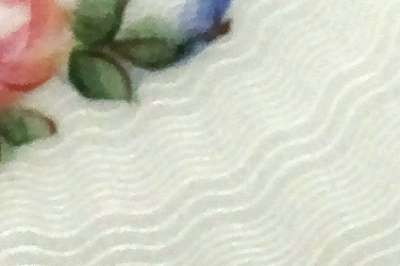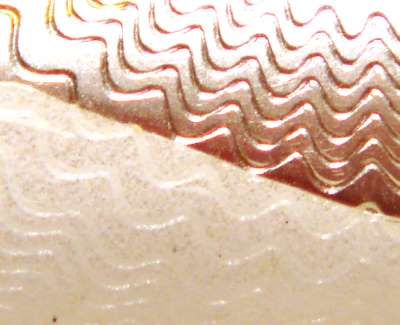Guilloche
Guilloché is a decorative engraving technique in which a very precise intricate repetitive pattern or design is mechanically engraved into an underlying material with fine detail. Specifically, it involves a technique of engine turning, called guilloché in French after the French engineer “Guillot”, who invented a machine “that could scratch fine patterns and designs on metallic surfaces”. The machine improved upon the more time-consuming practice of making similar designs by hand, allowing for greater delicacy, precision, and closeness of the line, as well as greater speed.

Translucent enamel was applied over Guilloché metal by Peter Carl Fabergé on the Faberge eggs and other pieces from the 1880s.
In consequence of the nature of the design, which is usually a series of lines that are, or look very much like they are interwoven into one another, any design engraved on metal, printed, or otherwise erected on surfaces such as wood or stone, that go in a similar style of constant wriggling that interlock - or look like they are interlocking - with one another, is referred to as guilloché.
The image below shows the finish stripped away from the underlying metal - a before and after view.
SOURCE: www.Wikipedia.org
